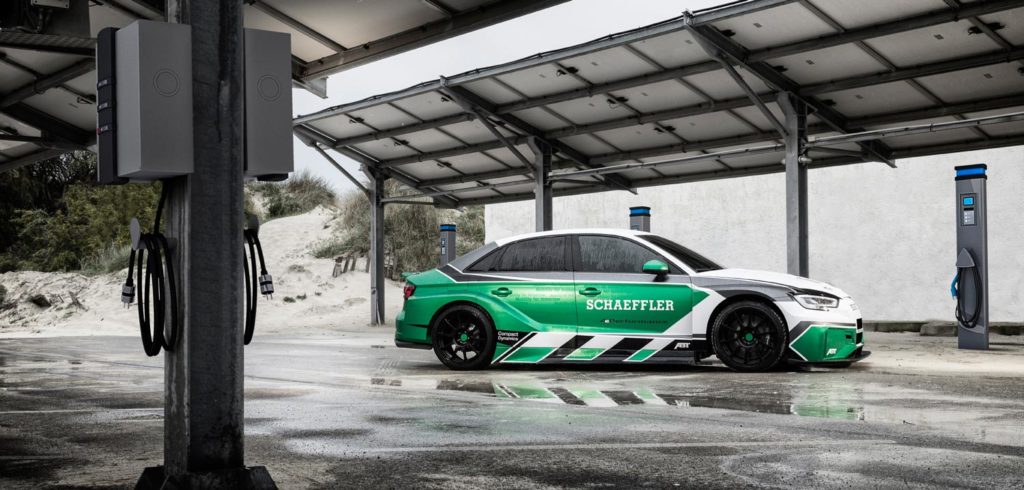Schaeffler has demonstrated how quickly modern motorsport technology can be put on the road with the 4ePerformance. The fully electric vehicle is powered by four Formula E motors with a total power output of 1,200ps
Schaeffler has developed a concept example of how technology is transferred from motor racing to a close-to-volume-production vehicle. Powered by four Formula E motors that come from the ABT Schaeffler FE01 Formula E racing car, the redeveloped Audi RS3 promises a total power output of 1,200ps.
Schaeffler has been active in ABB FIA Formula E, the world’s first electric racing series, from the first season. This makes the automotive supplier one of the pioneers of electric mobility and the electric racing series is an ideal test field for the development of electric mobility technologies.
Based on the steel body of the RS3, the Schaeffler 4ePerformance will accelerate from 0-200km/h in less than 7 seconds. Each individual motor is directly connected to a wheel by means of a spur gear unit, while two motors share one gearbox housing and thereby form an electric twin axle. This architecture enables selective control of drive torque to individual wheels. The power required for this is provided by two batteries with an overall capacity of 64kWh.
“For Schaeffler, this vehicle is a test laboratory on wheels thanks to its free scaling options for the drive power. We are currently testing and developing our own driving dynamics control system, which is based on physical vehicle and wheel modeling. We have been learning a lot especially in the area of software-based driving dynamics control systems,” said Simon Opel, director of Special Project Motorsports at Schaeffler.
Prof. Peter Gutzmer, Schaeffler CTO, is optimistic over the future implementation of motorsport technology into production vehicles: “In the same way as Schaeffler has contributed its technical expertise to Formula E from the very beginning, it also plays a pioneering role and is a partner for components and complete system solutions when it comes to applying electric mobility to volume production vehicles and putting them on the road.”



